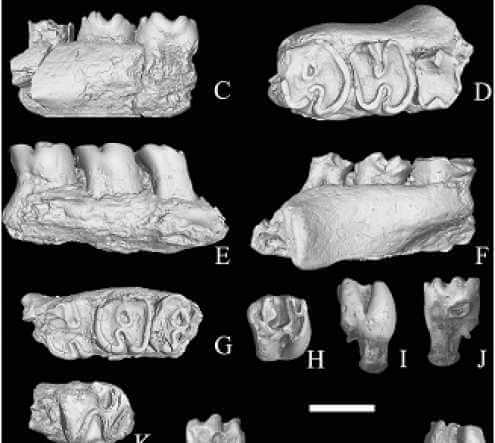In the study, published in the scientific journal PLoS One, the researchers described an extinct rodent Sayimis negevensis that was the distant forerunner of the gondii (also called comb rats) that exist today in North and East Africa. It is one of the few species discovered in Israel of Asian origin.

A handful of tiny teeth found in the Negev, near the city of Dimona, led an international team of researchers to define a new species of rodent from about 18 million years ago.
Its unique characteristics point to the animal migration patterns between Eurasia and Africa in the early Miocene (23 million-16 million years ago) and shed light on the centrality of Israel in the Levantine corridor connecting the three continents.
In the study, published in the scientific journal PLoS One, the researchers described an extinct rodent Sayimis negevensis that was the distant forerunner of the gondii (also called comb rats) that exist today in North and East Africa. It is one of the few species discovered in Israel of Asian origin.
"Although Israel was more connected to Africa in the early Miocene and most of the mammals found there were of African origin, the new Israeli species of the extinct rodent is close in its morphology to Gondi species of the same period found in Pakistan in Asia. Therefore, the discovery indicates that mammals used the Levantine Corridor in their journey between Eurasia and Africa already in the early Miocene," explained Dr. Rivka Rabinowitz from the Institute of Earth Sciences and the National Nature Collections at the Hebrew University of Jerusalem, one of the authors of the study.
Gondii are rodents, small in size, the last descendants of the Ctenodactylus family whose ancient ancestors appeared in Asia about 40 million years ago. Their distribution expanded significantly from the Far East to Asia during the Miocene, but today only a small number of species have survived and they live on rocky outcrops in the deserts of Central and North Africa.
Israel is the only place along the eastern Mediterranean - from Anatolia to Sinai - where fossils from the early Miocene period have been found. The researchers named the new species Sayimis negevensis after the geographical location where it was discovered.
"Israel is in a unique location documenting the animal migrations that took place about 19 million years ago between Eurasia and Africa," said Raquel Lopez-Antonanza, a researcher from the University of Bristol, who led the current study.
The new discovery of the rodent is part of an international project focused on the study of the fauna and environment in Israel in the early Miocene.
"Israel's location between Eurasia and Africa is reflected in the flora and fauna infrastructure. Throughout a large part of time (geological ages) the area was covered by a sea where sedimentary rocks and marine fauna were layered. Therefore, the information about the land flora and fauna is less common, but when there are land stages in geological history, we witness decisive events of the explosion of species in the past. That's why we formed a research group that focuses on reconstructing what was around 20 million years ago (during the early Miocene) in Israel," said Dr. Rabinowitz.
The group consists of researchers from Israel - Dr. Rabinovitz from the Hebrew University, Dr. Rani Calvo from the Geological Institute and Dr. Ari Grossman from the Midwest University in Arizona, alongside other international experts, including Dr. Raquel Lopez-Antonanza from the University of Bristol who led the research, Dr. R. Gideon Hartman from the University of Connecticut and Dr. Fabian Knoll from the University of Manchester.

One response
And the origin of the ibex, it is true that in Eurasia there are more species of ibex - Alpine, Caucasian, Iberian ibex and more. And in Africa only Nubian and Ethiopian ibex. But maybe this is because in Eurasia there is a wider variety of habitats? And yet we have so many subspecies, and similar species like The wild sheep, it seems that the goat offered is not African. Or am I wrong?